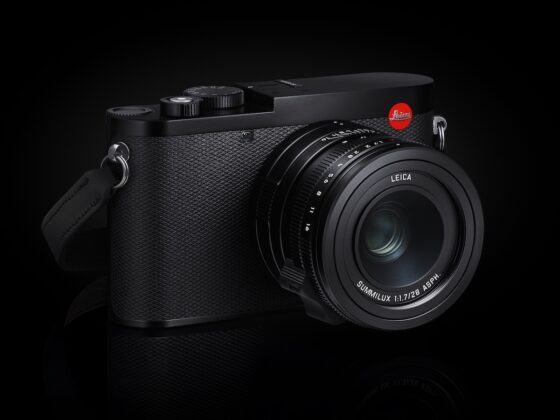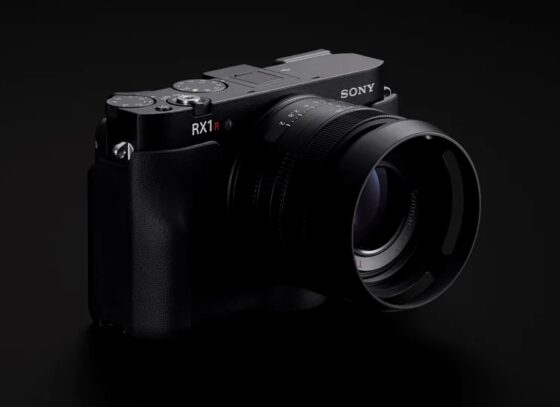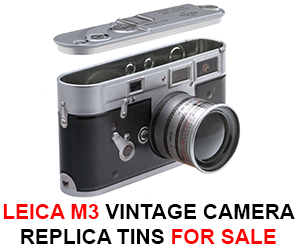

After a decade, the Leica Q finally got some real competition – today, Sony officially announced a new RX1R III full-frame, fixed-lens camera. Here are the basic Sony RX1R III specifications:
- 61MP Full-Frame Exmor R BSI Sensor
- ZEISS Sonnar T* 35mm f/2 Lens
- BIONZ XR & AI Processing Unit
- 693-Point PDAF & Real-Time Tracking AF
- 4K 30p 10-Bit & FHD 120p Video
- 2.36m-Dot 0.7x OLED EVF
- 3.0″ 2.36m-Dot Touchscreen LCD
- Step Crop Modes and Creative Looks
- Updated Design, Improved Battery Life
- SD UHS-II Slot; USB-C, HDMI, Mic Ports
- No IBIS
- No tiltable screen
- No weather sealing (Leica has IP52)

Here is a specifications comparison between the Leica Q3 and the Sony RX1R III cameras:


Key differences & similarities:
1. Sensor & Resolution:
- Sony RX1R III: Features a 61-megapixel full-frame Exmor R BSI CMOS sensor, the same high-resolution sensor found in Sony’s flagship Alpha 7R V. This offers immense detail and cropping flexibility.
- Leica Q3: Also boasts a 60.3-megapixel full-frame BSI CMOS sensor with “Triple Resolution Technology,” allowing you to shoot at 60MP, 36MP, or 18MP DNG (RAW) files. This provides flexibility for file size and processing needs.
- Similarity: Both offer extremely high-resolution full-frame sensors, appealing to photographers who want maximum detail.
2. Lens & Focal Length:
- Sony RX1R III: Retains the fixed Zeiss Sonnar T* 35mm f/2 lens from its predecessors. This is a classic focal length for street photography, portraits, and general use, known for its sharpness and rendition. It also features “Step Crop Shooting” to simulate 50mm and 70mm equivalent focal lengths (at reduced resolution).
- Leica Q3: Features a fixed Leica Summilux 28mm f/1.7 ASPH. lens. The wider 28mm focal length is popular for street, landscape, and environmental portraits. It also has digital crop modes for 35mm, 50mm, 75mm, and 90mm equivalents. The Leica lens also has optical image stabilization and an integrated macro mode (focusing as close as 17cm).
- Difference: This is a major differentiator. The choice between 28mm and 35mm fixed lenses dictates the photographic style and preferred field of view. The Q3’s wider aperture (f/1.7 vs f/2) offers slightly better low-light performance and shallower depth of field.
3. Autofocus System:
- Sony RX1R III: Inherits Sony’s latest BIONZ XR processor and a dedicated AI processing unit for advanced subject recognition and tracking. It has up to 693 phase-detection AF points covering approximately 78% of the image area, promising much faster and more reliable autofocus than its predecessor.
- Leica Q3: Features a hybrid autofocus system combining phase detection AF, contrast AF, and Depth from Defocus (DFD), along with AI. It has 315 focus points. While a significant improvement over previous Q models, Sony’s AI-powered AF is generally considered class-leading.
- Difference: Sony generally has a strong reputation for advanced and fast autofocus, particularly with its AI capabilities.
4. Video Capabilities:
- Sony RX1R III: Supports 10-bit 4K/30p video (oversampled from the full sensor width) and 1080p at 120fps for slow-motion. It includes advanced profiles like S-Log3 and S-Cinetone, and supports user-uploadable LUTs for color grading.
- Leica Q3: Capable of recording up to 8K video (8192 x 4320) at 30fps and 4K up to 60fps, with various codecs including H.265 and ProRes. This gives the Q3 an edge in raw video resolution.
- Difference: The Q3 offers higher maximum video resolution (8K vs 4K), which could be a deciding factor for videographers.
5. Design & Ergonomics:
- Sony RX1R III: Maintains the exceptionally compact form factor of its predecessors. It has a redesigned top plate with recessed dials and a fixed (non-pop-up) OLED electronic viewfinder (2.36 million dots, 0.7x magnification). The 3-inch rear LCD is now a touchscreen but is fixed in place, losing the tilting functionality of the RX1R II. It has a refined grip and textured finish.
- Leica Q3: Features a full metal housing (magnesium die-cast) with IP52 ingress protection (dust and splash resistant). It has a tiltable 3-inch touchscreen LCD with 1.84 million dots and a high-resolution 5.76 million-dot OLED electronic viewfinder (0.79x magnification). The Q3 is generally larger and heavier than the RX1R III.
- Difference: The RX1R III prioritizes ultimate compactness, while the Q3 offers a tilting screen, a higher-resolution EVF, and weather sealing. The Q3 also has Leica’s signature minimalist design and premium build quality.
6. Battery Life:
- Sony RX1R III: Uses the NP-FW50 battery, rated for approximately 300 shots (CIPA). This is an improvement over the RX1R II’s battery but still relatively modest for a modern camera.
- Leica Q3: Uses the BP-SCL6 battery, rated for approximately 350 shots (CIPA).
- Difference: Both cameras have somewhat limited battery life compared to larger mirrorless cameras, but the Q3 has a slight edge.
7. Connectivity & Features:
- Sony RX1R III: Includes USB-C, micro-HDMI, a microphone jack, Wi-Fi, and Bluetooth. It has “Creative Looks” for in-camera image styling.
- Leica Q3: Features USB-C (USB 3.2 Gen 2), HDMI Type D, Wi-Fi 5, and Bluetooth 5.0. It’s “Made for iPhone and iPad” for seamless connectivity with the Leica FOTOS app. It also supports wireless charging.
- Difference: Both offer modern connectivity, but the Q3’s wireless charging and deeper integration with Apple devices might appeal to some users.
8. Price:
- Sony RX1R III: Priced at approximately $5,099.99 USD at launch.
- Leica Q3: Priced at approximately $5,995 USD.
- Difference: Both are very expensive cameras, but the Leica Q3 carries a higher premium, as is typical for the brand.
9. Who is each camera for?
- Sony RX1R III:
- Photographers who prioritize the absolute smallest full-frame camera with a fixed 35mm lens.
- Those who demand the highest resolution currently available in a compact and Sony’s cutting-edge AI-powered autofocus.
- Users who appreciate Sony’s established ecosystem and processing.
- Might appeal to those upgrading from the RX1R II and wanting more resolution and improved AF.
- Leica Q3:
- Photographers who prefer a fixed 28mm focal length and the unique “Leica look.”
- Those who value premium build quality, weather sealing, and a more tactile, traditional shooting experience.
- Users who need 8K video capabilities in a compact body.
- Individuals who appreciate the Leica brand aesthetic and luxury appeal, and are willing to pay a premium for it.
- The tilting screen and higher resolution EVF could be significant advantages for some.
In summary:
The Sony RX1R III doubles down on compactness and brings Sony’s latest sensor and autofocus technology to the fixed-lens full-frame market, particularly appealing to those who love the 35mm focal length and demand top-tier performance in a tiny package. The Leica Q3, while slightly larger and more expensive, offers a wider 28mm lens with optical stabilization, a more robust build with weather sealing, a tilting screen, a higher-resolution EVF, and impressive 8K video capabilities, all wrapped in Leica’s iconic design and user experience. The choice between them largely comes down to preferred focal length, design philosophy, and budget.
Sony RX1R III pre-orders are now open:
Camera Comparison: Sony RX1R III vs Fujifilm GFX100RF vs Fujifilm X100VI















